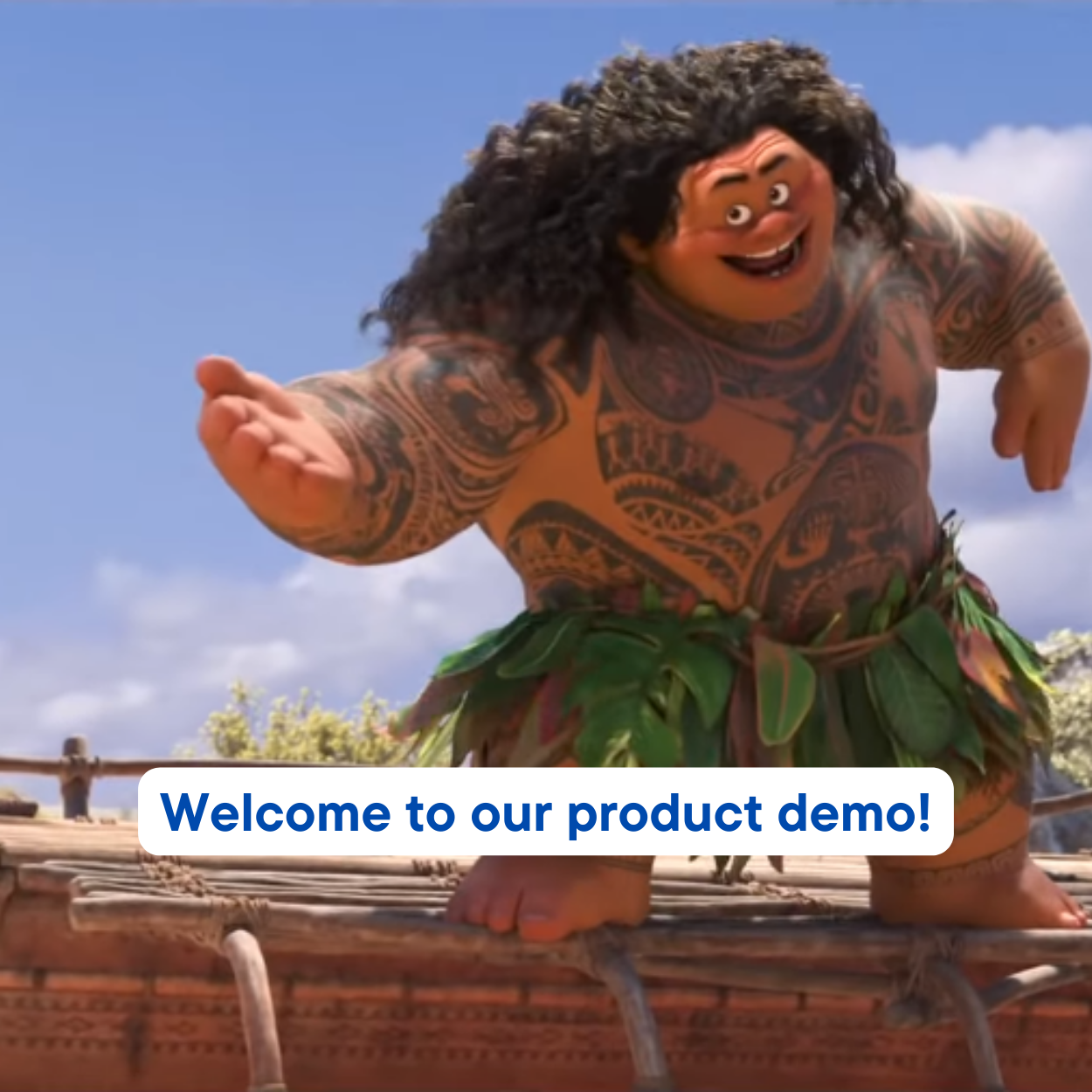Ever felt like your sales pitch just isn't sticking? You're not alone.
In a sea of competitors, standing out is about more than just a flashy product or a smooth pitch; it's about crafting sales collateral that resonates, informs, and, most importantly, converts.
This isn't just about brochures or presentations. It's about creating a narrative that aligns perfectly with your clients' needs and aspirations.
Whether you're a seasoned sales veteran or new to the game, refining your sales collateral can be the game-changer in your strategy.
Let's dive into the art and science of designing sales materials that do more than just 'sell'—they tell a compelling story, making every prospect feel like they're part of something exceptional.
What is sales collateral?
Sales collateral goes beyond mere pamphlets or data sheets; it's the ensemble of personalized tools used to vividly communicate your product's story. This toolkit isn't just about listing features; it's about weaving a narrative that resonates with a prospect's unique challenges and aspirations.
Imagine it as a bridge, connecting what your product can do with why it matters to your client. Whether it's a well-crafted case study that echoes a prospect's situation or an infographic that simplifies complex solutions, every piece of collateral is a strategic asset. It's designed to enlighten, engage, and empower the decision-makers, guiding them on a journey from curiosity to conviction.
In essence, sales collateral is your silent ambassador, subtly yet powerfully aligning your product's strengths with your customer's success story.
Types of sales collateral
Sales collateral is a broad term that encompasses various materials used in the sales process to facilitate understanding, engagement, and decision-making by potential customers.
It's a critical element in both marketing and sales strategies, especially in the B2B (business-to-business) domain, where the sales cycles are longer, and decisions are highly informed and nuanced.
Here's a closer look at different types of sales collateral, each serving unique purposes in the sales and marketing funnel.
1. Brochures and data sheets
Often the first point of contact with your product, these materials are more than mere informational documents. They distill complex product features and benefits into digestible, compelling narratives, making them essential B2B sales collateral.
A well-designed brochure or data sheet balances technical details with persuasive storytelling, ensuring that a potential customer understands not just the 'what' but the 'why' of your product.
The best sales collateral of this type doesn't overload the reader but instead, invites them to a conversation, setting the stage for deeper engagement.
2. Case studies and testimonials
Nothing speaks louder than success. Case studies and testimonials are powerful tools in your arsenal of marketing and sales collateral. They provide real-world proof of your product's value, directly addressing any skepticism in the prospect's mind.
A compelling case study doesn't just showcase results; it narrates a journey of a challenge met and overcome with your product or service. It's a story where the customer is the hero, and your business plays a crucial supporting role, making it an invaluable piece of B2B sales collateral.
3. Whitepapers and eBooks
These are the heavyweights of product collateral. Whitepapers and eBooks offer in-depth insights, thought leadership, and detailed explanations of complex issues, solutions, and industry trends. They are not overtly salesy but provide immense value to the reader, establishing your brand's authority and expertise in the field.
As part of your types of sales collateral, they nurture leads by offering substantial, meaningful content, helping potential customers understand intricate problems and the sophisticated solutions your business can provide.
4. Videos and interactive presentations
In an era where attention is a prized commodity, video and interactive presentations stand out as some of the best sales collateral. They combine visual appeal with storytelling, making complex data or processes understandable and engaging.
Whether it's a product demo, a virtual tour, or an interactive module, these types of sales collateral can bring your product to life, offering a dynamic and memorable experience that static documents cannot match.
5. Infographics and visual aids
Infographics translate data into stories, making them a crucial part of your marketing and sales collateral. They are particularly effective in B2B sales environments where decision-making is data-driven but time-constrained.
A well-crafted infographic turns numbers into narratives, trends into insights, making them not just informative but also persuasive. As part of your arsenal of types of sales collateral, they help bridge the gap between data and decision, delivering complex information in an accessible and visually engaging format.
Product collateral, marketing collateral and sales collateral: What’s the difference?
Marketing collateral, sales collateral, and product collateral, though used interchangeably at times, serve distinct roles in the journey of attracting and securing a customer.
Marketing collateral is like the initial handshake and introduction at a networking event. It's designed to create brand awareness and generate interest.
Think of it as the broader story of your company's mission, values, and overall offerings. It's less about closing a deal and more about opening conversations, often targeting a wider audience.
Sales collateral, on the other hand, is like the engaging conversation that follows the handshake. It's more specific and tailored, aimed at nurturing leads and addressing the unique needs and pain points of potential customers.
This type of collateral is used deeper in the sales funnel, often during one-on-one interactions with prospects, to educate and persuade them towards making a purchase.
Product collateral is the most focused, akin to the detailed answers you provide when asked about a specific service or product you offer.
It dives deep into the features, benefits, and differentiators of a particular product or service, serving as a vital tool during the consideration and decision-making phases of a buyer's journey.
5 Best practices to create and manage sales collateral
Creating and managing sales collateral effectively is pivotal in ensuring that your sales and marketing efforts hit the mark. It’s not just about producing material; it’s about crafting resources that resonate, persuade, and ultimately drive decisions.
Here are five best practices to guide the creation and management of impactful B2B sales collateral, product collateral, and other types of sales and marketing collateral.
1. Understand your audience
Before crafting any piece of sales collateral, it's crucial to have a deep understanding of your target audience. What are their pain points, desires, industry language, and decision-making criteria? Tailoring your content to address these specific needs ensures that your material is relevant and engaging.
For B2B sales collateral, this might involve creating different versions of a document to cater to various stakeholders involved in the buying process, each with their unique concerns and priorities.
2. Align with the buyer's journey
Each stage of the buyer's journey – awareness, consideration, and decision – requires different types of sales collateral.
For instance, during the awareness stage, potential customers might be more receptive to infographics and blog posts that educate them about their challenges. As they move to consideration, they might need more in-depth material like case studies or product demos.
Finally, to help them make a decision, they might need detailed product specifications or a comparison chart. Ensuring your collateral aligns with these stages enhances its effectiveness.
3. Ensure consistent branding
Consistency in branding, voice, and style across all your marketing and sales collateral helps in building trust and recognition. Every piece of content, whether a product datasheet, a presentation, or a white paper, should reflect your brand's identity and values.
This doesn’t mean every document looks the same, but a coherent visual and narrative thread should connect them, reinforcing your brand's message and identity.
4. Keep content up-to-date and accessible
In a fast-evolving market, outdated collateral can do more harm than good. Regularly review and update your materials to reflect the latest product features, market data, and customer testimonials. Moreover, ensure that your sales team can easily access the most current versions of these documents.
Using a centralized content management system can help in organizing and distributing your sales collateral efficiently, ensuring that everyone is on the same page.
5. Measure effectiveness and iterate
To ensure your sales collateral continues to serve its purpose effectively, it's vital to measure its impact. Track metrics like usage, engagement, and influence on sales cycles. Solicit feedback from the sales team and customers to understand what's working and what's not.
Use these insights to refine and improve your materials continuously. Remember, the best sales collateral is not static; it evolves with your product, market, and buyer's needs.
Wrapping up
In the ever-evolving landscape of B2B sales, sales collateral emerges as a strategic linchpin, bridging the gap between engagement and conversion. It's not merely about information but about storytelling that resonates with individual needs.
The best sales collateral, when thoughtfully crafted, transforms prospects into partners, making every interaction a step closer to success. It's a dynamic tool that adapts, educates, and empowers, echoing the unique value your product or service brings.
Sales collateral isn't just about what you say; it's about how you say it, ensuring that your brand's story is etched in the minds of your audience.
-p-130x130q80.png)
































































.png)










